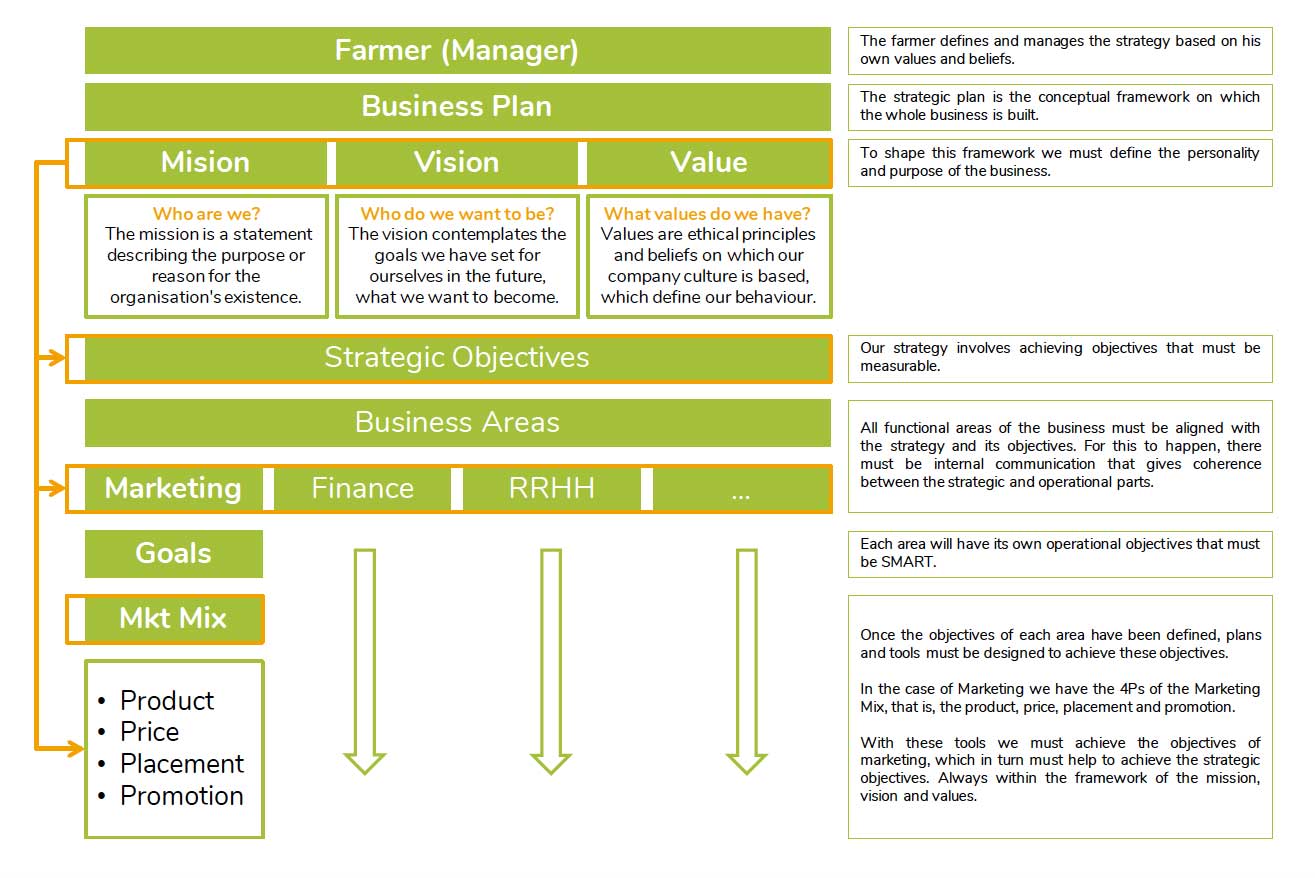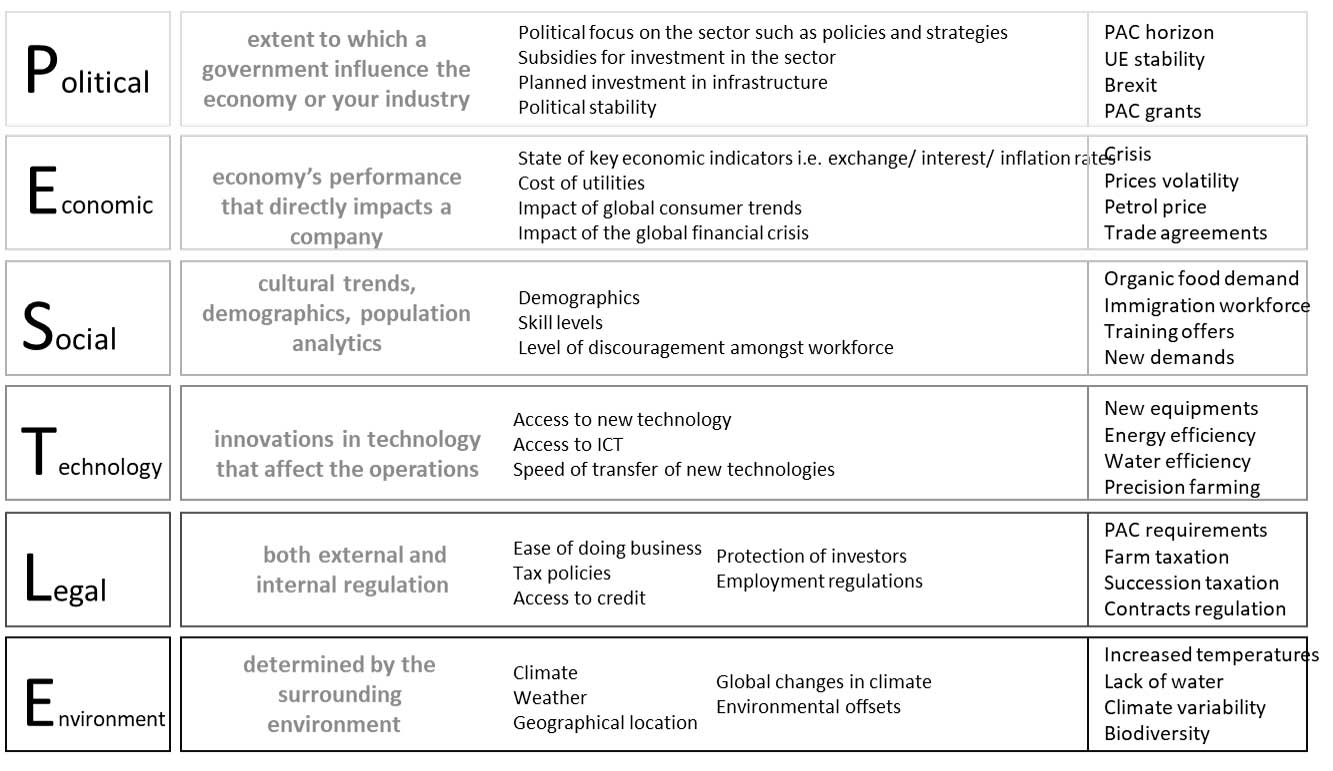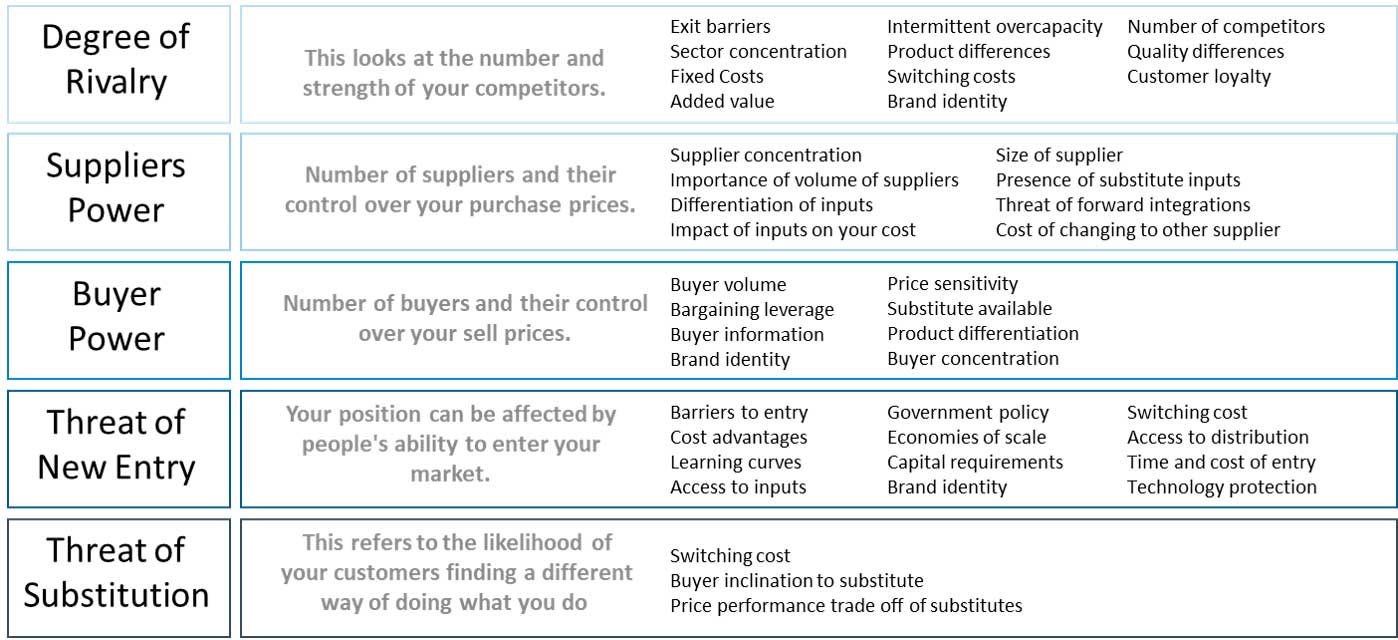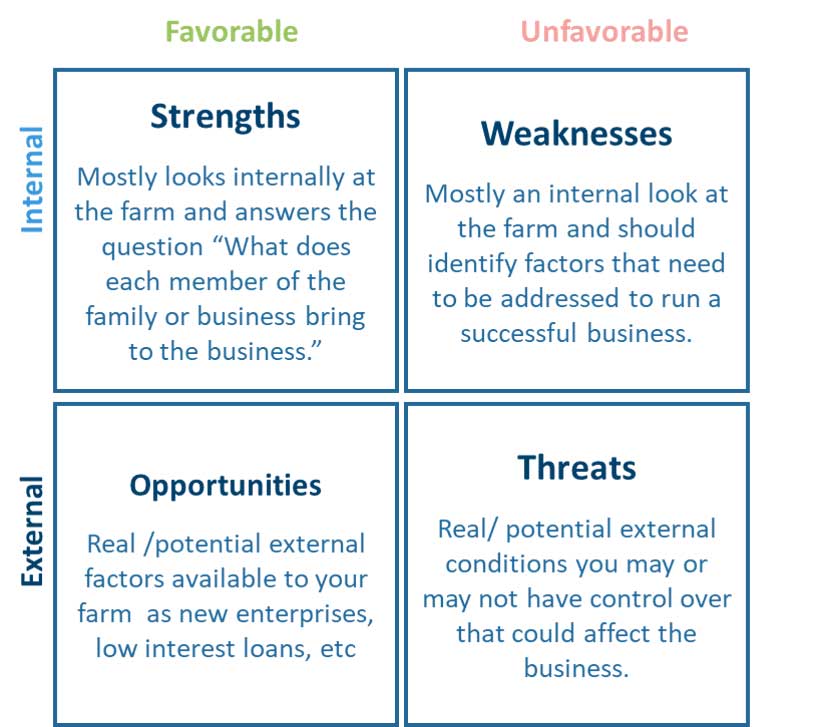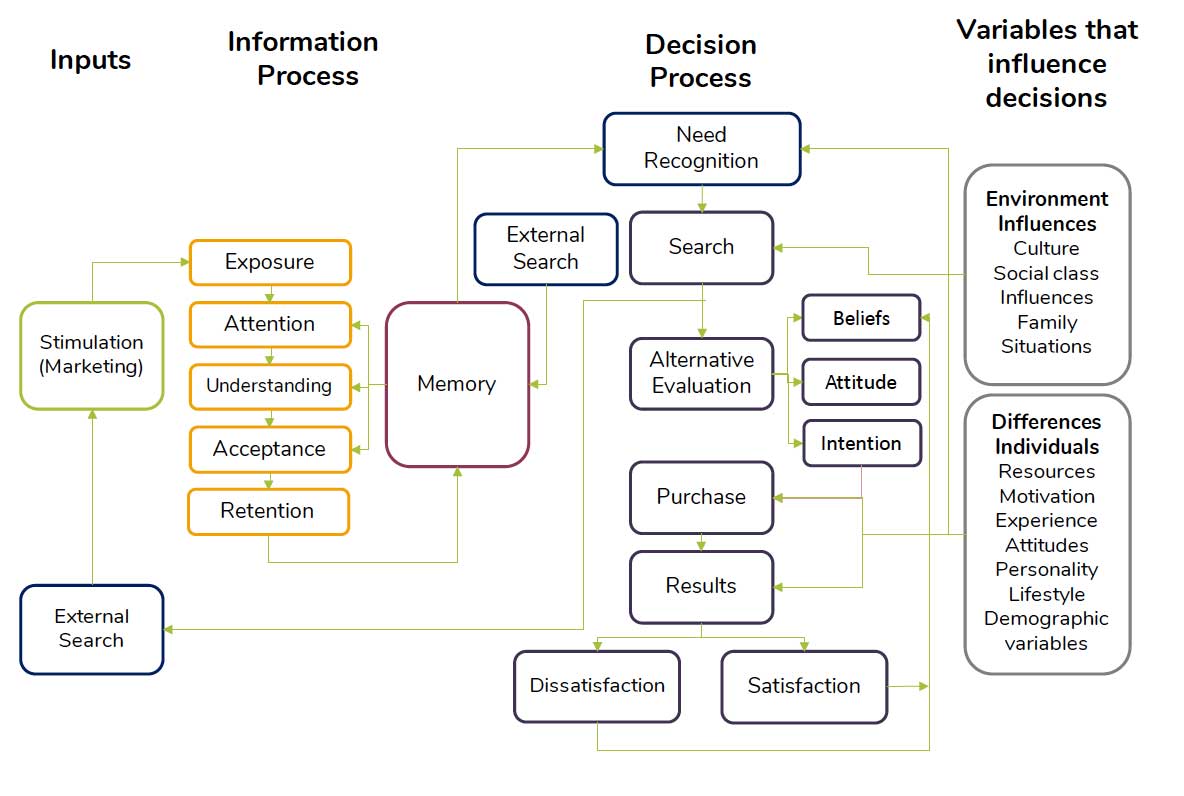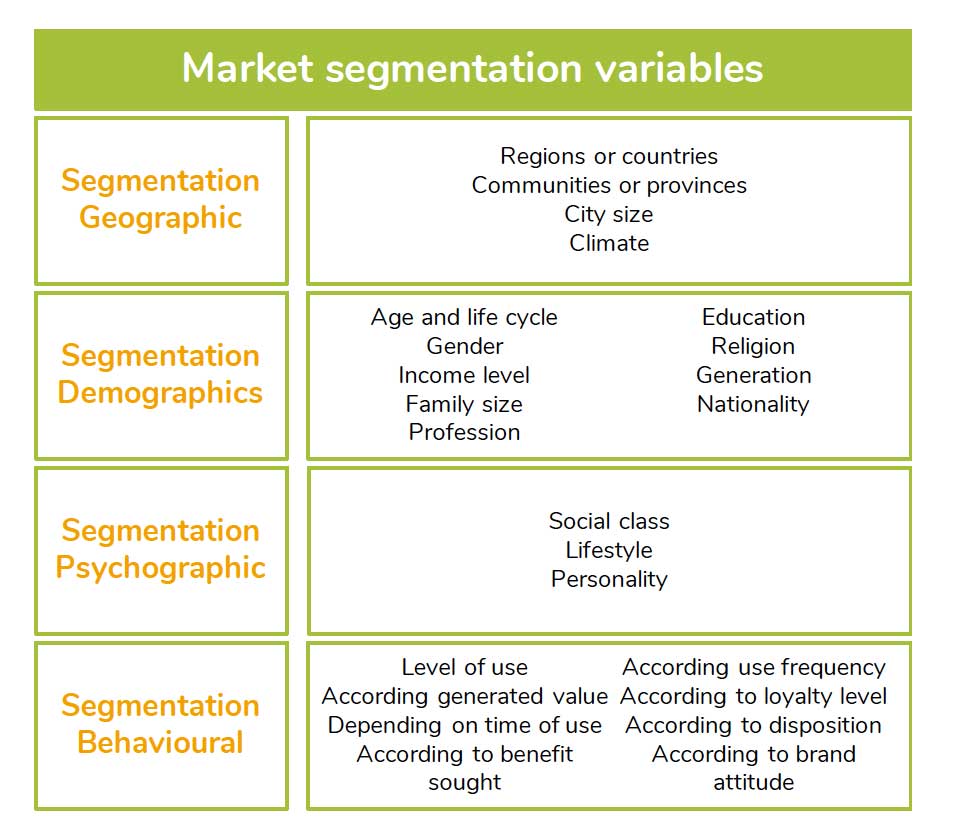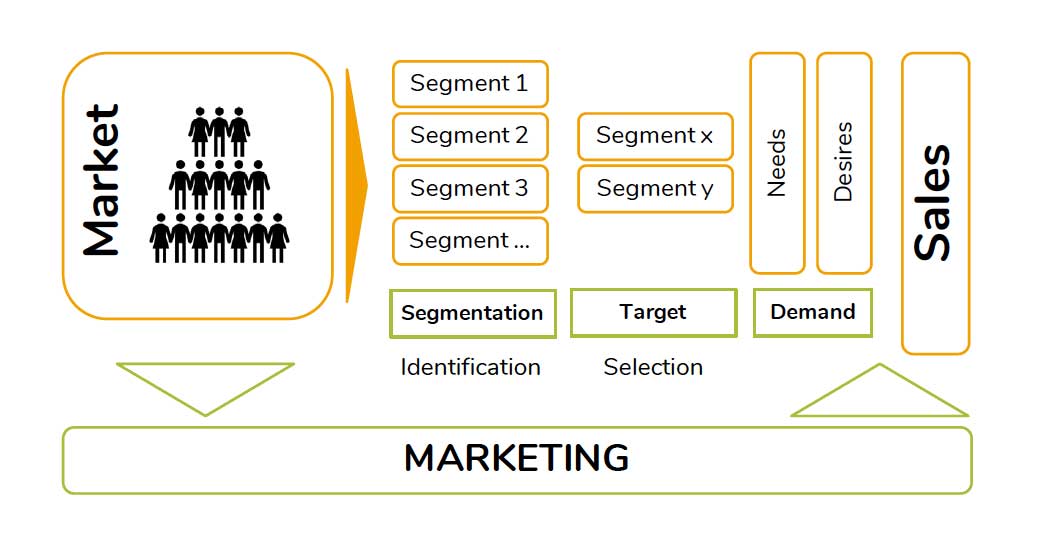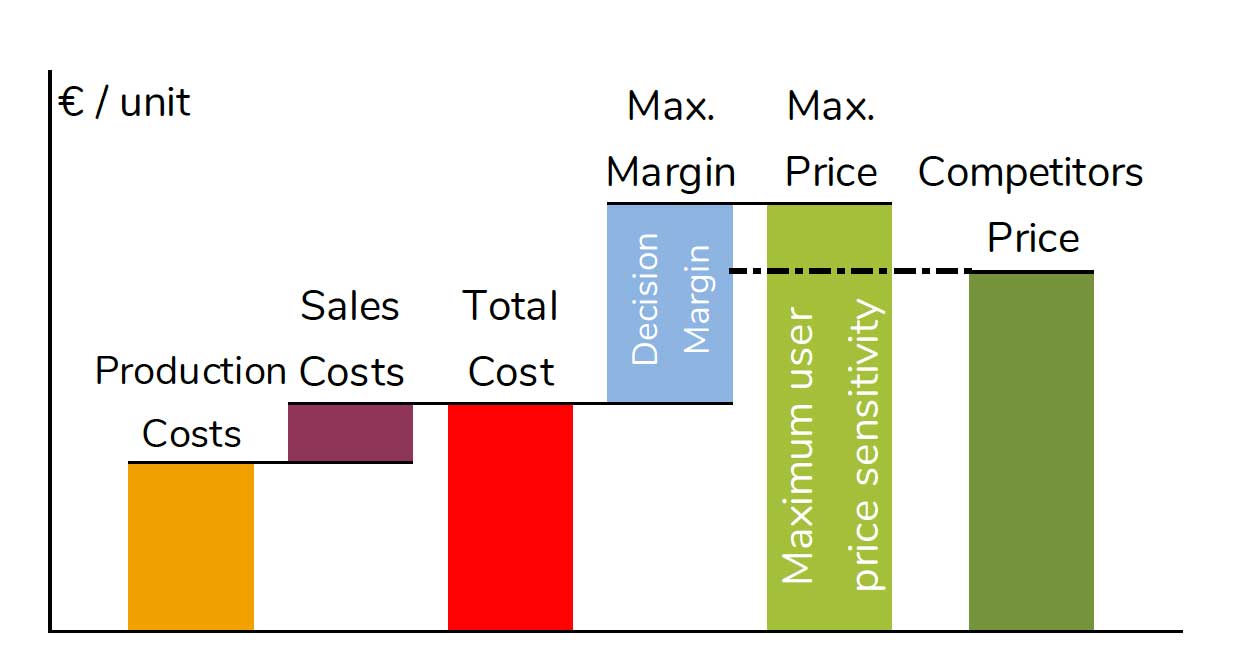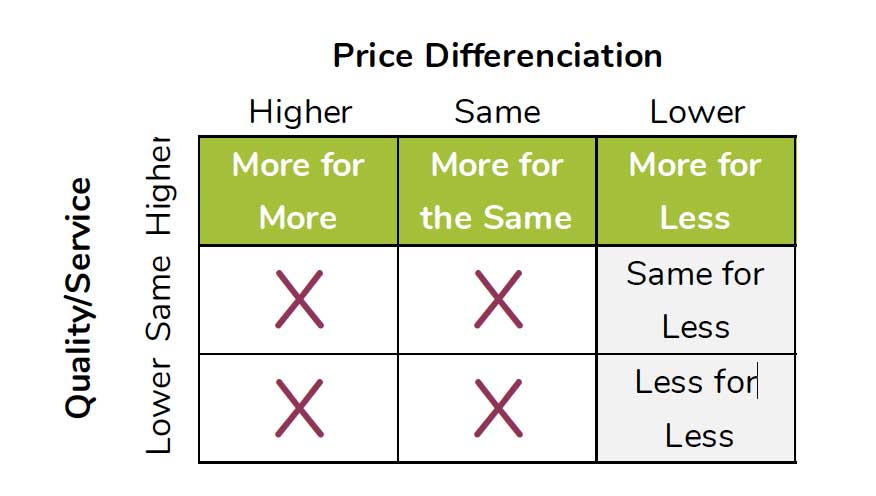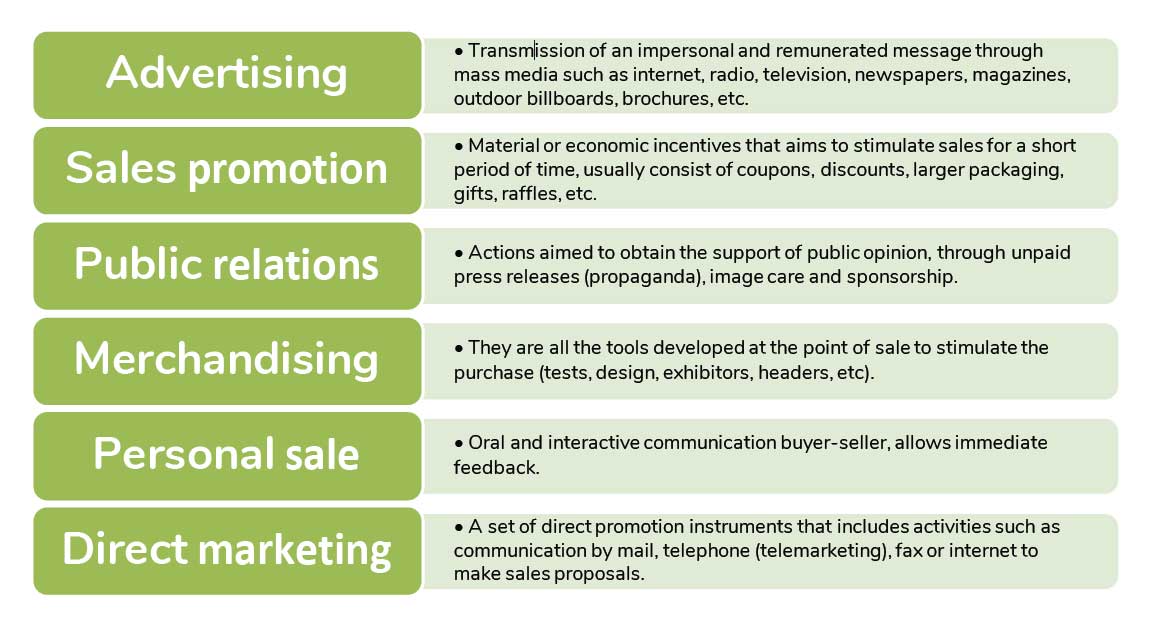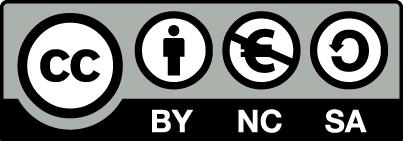OVERVIEW
In this module, you will learn how to develop an internal and external communication plan. Starting from the strategic definition of your business, you will be able to align your communication and marketing decisions with the values and purposes you have decided to establish in your company.
First, you must know your competitive environment and define your business objectives. Then, you will be able to distribute your products and services in your market. Spread messages that define you as a company and as a brand.
LEARNING OBJECTIVES
Knowledge:
You will be able to identify the different concepts related to strategic planning and marketing, as well as tools for analysing competitive environments that will help minimise possible errors in your market plans.
Skills:
You will develop skills to improve the internal communication of your company. You will also improve your ability to recognise different types of customers, which will lead you to consider market segmentation and customer value effectively. You will be better able to adapt your product, its price, and the channels through which it will be delivered.
Competences:
You will upgrade your competence in defining objectives as a way to achieve your market strategies and how to develop your products in an organised way, knowing your customers' motivations, learning to segment them and adapting your offer to their specific needs. You will be able to develop abstract ideas and work on developing impressive messages with market intention, through the creation of a brand culture.
- 1.1. Business strategy concepts (mission, vision and values)
- 1.2. Connection of principles with the marketing mix
- 1.3. Building the principles: mission, vision and values
- 1.4. Internal and External Communication
Companies, like people, must have a purpose and a personality that defines and differentiates them from others. In the case of companies, this is established through the definition of a strategic plan, in which their mission-vision-values must be described and to achieve them, objectives are established.
The strategy must be understood as a business plan that seeks to exploit our competitive advantages in a way that allows us to differentiate ourselves from our competitors, taking advantage of our business strengths, with the aim of creating greater value for our customers.
The STRATEGIC PLAN is proposed at a company level in the long term, but each area of the business must contribute to the fulfilment of the objectives under the premises established in its mission, vision and values. Thus, the MARKETING PLAN is managed in the short term, which is called operational management, and establishes its own objectives in the field of marketing considering the long-term strategic vision of the company.
On farms and SMEs, due to their size, the overall strategic planning process is not usually carried out, so the marketing plan can be a suitable substitute for the strategic plan.
The formulation of the strategy starts with the establishment/revision of the mission, vision and values of the organization by the management.
MISSION
Who are we?
The corporate mission is a written statement describing the reason for the existence of the company and its main objective.
- What do we do?
- What is our business?
- What do we do?
- What is our being reason?
- Who is our target?
- What is our geographical scope of action?
- What is our competitive advantage?
- What differentiates us from our competitors?
VISION
Who do we want to be?
The vision of a company contemplates the goals we have set for ourselves in the future, it is the conception of what we want to become.
Vision is motivating and inspiring, therefore all the goals we set for it must be realistic and achievable. Undoubtedly, the vision of an organization will help us guide our team towards a goal.
- What do I want to achieve?
- Where do I want to be in the future?
- What could I incorporate into the company that I am not doing?
- Who will I do it for?
- Will I address other types of customers?
- Will I expand my area of operation?
- What resources or qualities should I have in the future to achieve this?
VALUES
What values do we have?
The values for a company are ethical principles, beliefs or qualities on which our company’s culture is based and allows us to create our patterns of behaviour.
We must not forget that values are the personality of our company and cannot become an expression of managers’ wishes, but they have to shape reality. Furthermore, a company’s values determine the way in which the company relates to and acts towards customers, suppliers, collaborators, competitors, etc.
- What are we like?
- What are our ethical business principles?
- What do we believe in?
As we have seen for the definition of the strategy, concepts, principles and guidelines must be defined that should guide all the actions of the company. However, if our employees and collaborators are not aware of the corporate culture that should guide their actions and tasks, it will be very difficult to find coherence when it comes to offering an image to the market we are targeting.
That is why the development of internal communication is essential. The first element we must achieve before offering a product on the market is that all the people who work in the company or for the company maintain a single and uniform vision of what we do, where we should go and what values should guide our behavior.
- 2.1. Importance of market research
- 2.2. Framework Analysis: PESTLE Analysis
- 2.3. Market Analysis: 5 Porter’s Forces Analysis
- 2.4. Company Analysis: SWOT Analysis as strategic tool
Many businesses are destined to fail from the beginning; sometimes we get carried away by beliefs that have not been contrasted with the reality of our market and the circumstances of our framework. If it is true that new technologies offer many opportunities, when we are in a rural environment many difficulties can arise from the point of view of accessory services, potential market and logistics. For this reason, we must be very conscientious in the elaboration of a business plan that offers us certain guarantees.
The development of any business requires a previous study that makes it possible to know the state of those factors that affect any strategic and market approach. We are talking about knowing the macro environment in which we operate (economic, political, social situation, etc.) as well as the market situation in which we compete (competitors, customers, suppliers, etc.).
In order to carry out a structured and simple study, there are certain tools that allow us to carry out situation analyses in a simple way. Every analysis process is based on breaking down a problem into its parts to individually understand their strengths and those that have opportunities for improvement.
In our desire to implement a marketing strategy, there are 3 analytical models that can help us for this purpose:
- PESTLE analysis (External macroenvironment)
- Analysis of PORTER’S 5 forces (External - microenvironment or market)
- SWOT analysis (Internal - strengths, weaknesses, opportunities and threats)
Once we have done this analysis, we will be able to start defining business and marketing objectives, and we can start developing actions to achieve them.
Sometimes referred to as a PESTLE analysis, it is a concept in marketing principles. This concept is used as a tool by companies to track the environment they’re operating in or are planning to launch a new project/product/service etc.
PESTLE is a mnemonic which in its expanded form denotes P for Political, E for Economic, S for Social, T for Technological, L for Legal and E for Environmental. It gives a bird’s eye view of the whole environment from many different angles that one wants to check and keep track of while contemplating a certain idea or plan.
So far, we have analyzed external elements to the company that can offer us opportunities or threats for which we must be prepared from the point of view of our marketing plan. But we must also know those internal aspects that may have a positive (strengths) or negative (weaknesses) impact on our marketing plan. In this sense we must reflect on those areas of our farm that can impact on it. Among these areas we must consider production, management, financial section, logistics capacity, team of workers, etc. From our knowledge of our farm we can identify the strengths and weaknesses we have as a business.
SWOT analysis is a strategic method used to identify the Strengths, Weaknesses, Opportunities, and Threats. SWOT identifies the internal and external factors that are favourable or unfavourable to achieve our farm’s marketing objectives. Identification of SWOT’s is essential because subsequent steps in the process can be derived from the SWOT and some goals could be set from the SWOT analysis perspective.
- 3.1. Communication plan
- 3.2. Set your internal communication goals
- 3.3. Generating messages in internal communication
- 3.4. Internal communication tools
Corporate communication includes the communication objectives, the channels and the messages that we launch to the outside, but also includes the messages and the work environment that we generate internally in the company.
The increasingly competitive market is making it difficult to establish lasting relationships that generate customer loyalty, so the work of communication and prescription of our products by our employees and partners is essential.
In business, two-way communication is fundamental, in which the company transmits through its channels, its employees and collaborators the messages that help to sell our products. And on the other hand, they must gather information on the needs of our customers and potential buyers, in order to be able to adapt, improve their experiences and build their loyalty in the future.
Internally, the entrepreneur must reinforce the corporate philosophy. From this, create an organizational culture that guides how to do things taking into account the values and beliefs.
In this type of relationship it is necessary to create a participatory environment between managers, employees and collaborators, to generate an atmosphere of trust. It is also essential to establish horizontal communication, where information does not have barriers that hinder the dialogue between staff and employer.
The better the internal working environment, the better the relationships of trust established with the external public. This should help to achieve commercial and strategic objectives.
We have already seen some of the reasons for developing an internal communication plan. Now you must choose your own objectives that you can measure:
- Organize and improve the exchange of information between areas of the company, thus preventing them from working in isolation.
- Create a company culture. If you want to create a brand image, you must start by creating a company culture in which everyone is aligned with the values and codes and objectives of the organization.
- Promote knowledge among managers and employees. Promoting an informed work environment, where workers know who is leading them and how, and management can in turn connect with their team and know who they are and what their strengths, weaknesses and aspirations are.
- Generate a corporate identity. Internal communication and company culture must promote the idea of belonging among workers and encourage teamwork, in order to have a warmer and more committed working environment.
- Promote internal participation. Establish spaces for the exchange of ideas, for social contact and for dialogue and debate, to share successes and challenges, to provide important information and to innovate in these fields.
We have mentioned that the mission of Internal Communication is to connect the objectives of the organization with those of the collaborators. To do this, the important thing is to find three or four key messages. Now we will see some considerations that are important to take into account when creating a message to the collaborator.
- Use a language that is 100% understandable.
- Avoid being long, remember: less is more in communication.
- Always try to align the content of the message with the philosophy of the company or with some organizational objective.
- Be creative, images, computer graphics and videos communicate much more than text.
- Do not use only one tool to communicate. Beware of abusing internal communication tools.
- Always think about the impact you want to achieve through your communication and use different internal tools to communicate the message and thus ensure coverage and that the employee reads it.
- Put yourself in the collaborator’s shoes, make your daily route and see which are those points of contact where we can “click” with them.
- In this way you will be able to adapt the means and tools of communication according to the profile of the employee and their routines.
- Likewise, techniques such as storytelling also help to connect to communicate with emotion and mobilize collaborators towards action.
There are many possible tools to establish healthy internal communication dynamics in a business. Try to identify those that best suit your way of working and those that are more appropriate to the size of the team and the profile of your employees. There must be unidirectional and bidirectional tools that guarantee feedback between managers and employees. Here are some of the most common ones:
- Meetings. Individual or group meetings are important to generate and transmit ideas, share and take the pulse of the team, identifying needs in both directions.
- Performance monitoring systems. Through the individual evaluation meetings, individual objectives can be set, linked to the strategic lines, so desired behaviours are promoted.
- Internal bulletins. As newsletters, monthly or weekly reports, circulars, where the worker is provided with news of interest, important information and where the exchange between peers is encouraged.
- Employee manual or guide. Provide employees with brochures that give them all the basic information they may need to communicate with other departments, as well as the information necessary for corporate identity: the history of the organization, its corporate organization chart, its mission, vision and values, etc.
- Informative posters. They should be placed in highly visible or high-traffic locations, where information of various kinds can be offered and even invite the internal public to participate.
- Intranet. Computerized networks to which only the members of the organization have access, where they can share files, have video conferences, send each other documents, etc.
- Electronic mail. An institutional e-mail is a good way to promote membership among the members of the organization and to allow a rapid exchange of information with minimal expenditure of resources.
- Suggestions box. This is a way of collecting workers’ concerns and needs, and by doing so anonymously it facilitates more direct and free communication.
- Protocols and description of processes. Through the job descriptions, tasks are described, but it is also possible to describe behaviour patterns, messages and aspects related to external-internal communication.
- Climate surveys
- 4.1. Utility and needs satisfaction
- 4.2. Characterize and classify your customers
- 4.3. Customer behaviour
- 4.4. Building targets
- 4.5. Segmentation
Within the relational framework of our company we share space with different agents such as workers, public entities, clients and society as a whole. Adapt the message in each direction depends on the specific needs of each person, on how that need generates a desire and how it generates a demand limited to their capacity to acquire a good or a service.
One of the objectives of marketing is to identify those needs and desires, designing products that meet those aspects to generate demand. But to achieve this function of marketing we must first define who we are going to address.
Of all the potential markets, we must choose a group that will constitute our audience or target. When we design a product or a communication we will be thinking about that target and their preferences. This public is a portion of the potential market can be divided into segments or smaller niches of customers with homogeneous characteristics that identify them.
Knowing the targets, their characteristics, desires and needs, we will have to design differential products that satisfy these groups in a different way than the competition. We must offer an added value that differentiates us from the competition and that is a plus for those who decide to buy our product.
Although during the analysis of Porter’s 5 forces we should have been able to identify and quantify our potential market, it is now time to characterize it by identifying its behaviour and understanding its preferences on ways to buy and consume.
Sometimes we are not interested in going to all of our market and will try to go to specific groups within our market, so it may be interesting to divide the potential market into segments, or homogeneous groups with similar characteristics. For example, we want to sell a product exclusively to groups of people with a high purchasing power, or we want to target our products to families with children, or we want to target our product to people who are sporty and/or concerned about their health or we want to sell to catering companies.
In this sense, it is important to investigate and continue investigating the market to find those groups that may be of interest to us, in terms of value and in terms that are related to our mission, vision and values. For example, we have decided to be a company oriented towards producing ecological products to protect our crops and be respectful of the environment while protecting our health and that of our customers. In this sense, we could orient our product to families with children and people who are concerned about their health.
The selection of these segments to which we will address is important, as it will determine our way of targeting them and how we will communicate with them. Segmentation is very important, it will allow us to identify homogeneous groups with common characteristics and needs. It will allow us to adapt the Marketing Mix (Product, Price, Communication and Distribution). And it will allow us to be efficient, since we will be able to target the marketing resources we want to reach.
The main objective is to segment the market in order to be able to direct marketing actions to an audience with common variables. So when we are going to segment the market we are going to have to adapt our marketing mix strategy as well.
To do this, you have previously analysed the different segmentation variables to find out the tastes, interests and motivations of your potential buyer. Therefore, we propose some questions that we should take into consideration.
- What determines their purchase decision?
- What are they looking for with the purchase?
- How often do they buy?
- Who do they buy for?
- How does the price impact?
- Is it a planned or spontaneous decision?
- Where do they come from?
- What features of the product service are most valued?
- How do they look for the product or service?
- How old are they?
- Who decides the purchase?
Below are some of the most common market segmentation variables:
Once the business and commercial objectives are defined, it is necessary to design strategies; in Marketing we have 4 basic instruments for this purpose. These 4 elements are the variables known as the 4 Ps for the first English letters of each of them: Product, Price, Place, and Promotion.
These variables are usually controllable by the company, but in SMEs they will only be relevant if we carry out our own marketing in which we can maintain some power in the market.
- On the one hand, the product and distribution are strategic elements that can evolve but usually have a long-term permanence.
- On the other hand, price and promotion are tactical instruments that can be easily changed if we have control over them.
From the perspective of the buyer, these 4 Ps become 4 C:
- Product ‑ Customer Value
- Price - Cost
- Place - Comfort
- Promotion - Communication
Our product will be any good or service that can meet the needs of our target audience (customer-buyer). In this sense, we should not only focus on the characteristics of the product, but also on the benefits it generates, as well as the feelings for the consumer.
The one who buys an organic product, besides the need to eat, is looking for a healthy product, which also satisfies the need for safety and tranquillity offered by such a product. From our perspective, we must consider which values or needs can be covered by the purchase of cultural heritage products. Our capacity to generate experiences could link the purchase of our products to emotional needs for these users, linking them to us in the long term (loyalty).
In addition to these concepts, the product also consists of other aspects such as quality, design, brand, services, financing, warranty, etc. To define a product we must take all this into consideration and not meet a simplistic criteria, all this generate perceived value and what makes each potential customer decide to buy or not and willing to pay one price or another.
The set of different products that we put on the market determines our portfolio of products; we must decide on their complementarities, homogeneity, and the way in which we will group them (it will be sold in a grouped or individual way).
When we define the characteristics that distinguish and identify our products we are differentiating products, and it must be one of our competitive advantages. The ways to differentiate are multiple, you can differentiate by quality, price, design, image, services, etc. In our case, the fact of supporting groups differentiates us from other traditional products that do not provide that differential value, which may not have competitive products.
Aspects that we must develop are the brand, the shape and the packaging, which will facilitate the recognition of the product, also allow differentiating and generates a positive image towards the product and the company.
Brand, positioning and differentiation
To reinforce our competitive position we must provide our products with all the differentiating elements that we are able, in this way we will have a stronger product and we can reach more types of customers.
The brand is an intangible value linked to the product, incorporating cultural and emotional values; the differential elements are those that are associated with the brand generating an emotional bond with the product.
We have already talked about positioning, which is the place you occupy in the mind of the consumer in relation to other products on the market. To a large extent it will depend on all the different attributes that we have associated to our product, and will determine the degree of preference of a consumer towards our product.
Knowing our position is relevant to maintain or correct the position we have in the mind of the consumer; there are several possible actions to positioning products:
- Due to product characteristics
- For the benefits or problems they solve
- For the type of use made
- By the class of users who access the product
- As it relates to other products of the same class or other classes
- So that of difference with other products of the same class
Life Cycle
This is a relevant concept and tries to resemble the behaviour of a product in the market with biological phases; in this way we explain the evolution of a product from its launch to its disappearance. In this sense, 4 phases are defined: introduction, growth, maturity and decline. These phases are associated with the evolution of sales and profits, and it is a standard way to analyse the evolution of a product, the behaviour of consumers and our marketing or competition strategies.
The classical economic theory establishes that when a price falls, the demand tends to rise and vice versa, and introduces the concept of elasticity; if the demand growth is greater than the price decrease, the demand is elastic and if this does not occur it is inelastic. The elasticity depends not only on the type of product but also on the type of consumer.
The price for marketing is the monetary value that the buyer is willing to pay for a good that meets their needs (utility) and that the seller is willing to sell to cover their costs and commercial margins.
The unit costs, that is to say what it costs us to produce a unit of marketable product, determine the minimum price so as not to incur losses (profit/losses = income-costs); the maximum price will be determined by the price sensitivity of the different segments of buyers (the average price that a potential client is willing to pay), therefore the decision must be made between these limits, conditioning the decision to obtain a rational unit margin that guarantees us certain profitability and on the other hand the competitive position of similar or substitute products sold by the competition.
The common pricing methods:
- The costs
- Competition
- The demand
Strategies
The cost method will allow us to set a minimum sale price, but normally in the market, large producers set prices that are usually the reference for the consumer and the rest of the producers are positioned above or below that price.
Our position in prices can be based on the differentiation of the product that justifies whether we are above or below the market leader. In response to this differentiation by quality / services (quality, availability, guarantees, etc.) will determine 9 possible pricing strategies.
Strategies marked with “X” should not be taken into account; in the upper line we find a strategic position in which we offer better qualities, attributes and / or services than market leaders, so based on our cost structure, from our expectations of profitability and our commercial objectives, we will position our price above, equal or below.
The positions marked blue would be those in which we differ in prices, always offering lower prices, knowing that we are equal or worse than our competitors in terms of product.
Once we have determined the product that we are going to sell and the sale price, we have to determine where we are going to sell and how we are going to get the product to the final consumer. The distribution’s mission is to make our product available for purchase. In this sense we have to consider several concepts:
- Sales force: it constitutes the set of sellers that have a company, develop personal sales and involve direct contact between the company and customers.
- Agents: third parties representing the products in exchange for a consideration.
- Franchise: a form of collaboration between two companies, thus by contract one grants the other, in exchange for a quantity and conditions, the right to operate a brand, ensuring services and assistance for such exploitation.
- Intermediary: person or organization that purchases our products to sell them to another buyer, thereby obtaining a profit, actively participating in the transfer of the product, which may affect the purchase and prescription process. The intermediary can be a retailer and sell to the final customer directly or be a wholesaler and sell to other intermediaries.
- Distribution channel: Set of intermediaries through which a product passes from the producer to the consumer.
The types of distribution channels are characterized by the number of intermediaries that participate between the producer and the consumer:
The promotion is based on communication to transmit information that stimulates the demand for the products to which it refers. Among the objectives of the promotion we have:
- Inform about the existence of the product, making known its characteristics and needs that it covers.
- Persuade about the benefits it offers and stimulate demand
- Remember the existence of the product and its advantages, to avoid changing brands
In addition to these objectives we can use promotion as a tool to:
- Image creation: subjective image of a product by what it projects or symbolizes (credibility, solitary action, social position, prestige, etc.).
- Product differentiation: communicate the differential aspects of the product that makes it different from the competition.
- Product or company positioning: the image we generate and the differential aspects position us in the mind of the consumer with respect to other similar products.
Within the commercial strategy the company has to decide where its communication efforts are heading, if it decides to allocate it to the channel and the intermediaries (push) or to the buyers (pull):
- “Push” strategies: tries to encourage communication and resources to enhance the channel’s action, so that they are the ones who push sales. Thus sellers, agents and intermediaries push sales.
- “Pull“ Strategies: try to encourage and put the resources in the communication to the buyer so that they are the ones who go to the points of sale in search of the product, so the buyer pulls the sales.
Traditional tools
Digital tools
Web o blog
A website or a blog are two main tools in which to centralize a digital or in-between marketing campaign.
We have at our disposal complementary tools of digital agro marketing such as microsites, social networks, multimedia platforms, forums and other elements to achieve greater visibility of our food marketing campaigns.
Web o blog
Gift of agriculture moves and shows itself. If one of your objectives is to be in the first positions or in the first page of Google, you must necessarily carry out actions of organic positioning ( SEO) or of payment (SEM) in your agro online marketing strategy.
Advertising display
It is the closest and most traditional digital agricultural marketing tool. They are advertisements (banners) of different sizes and formats (text, images, graphics, videos ...) that occupy a prominent place in agricultural Internet portals in a striking and impressive way.
An effective tool that has been able to adapt to changes. It has the ability to operate in combination with other strategies. Email marketing in agriculture can be done with our own or third party databases, in a newsletter format, bulletins, catalogues, etc.
Social Media
They continue to grow since the advent of digital marketing. Social networks are an effective complement for the communication of contents, creation of satellite agro-community at your service or product, for branding and also as a means of customer service.
Digital Marketing
Each company will decide according to its strategy which channel suits it best and which gives it the most positive return. The ideal would be to establish a marketing mix that brings together all the existing channels, but always keeping in mind the premise of not wasting energy on tools that will not impact our target customer.
- Creating a quality website
The need to create a website is indifferent to the sector of activity of the company, since this page is, in many cases, the first and only showcase of the business.
The website responds to the need for an online presence. If it does not, the potential client will find the competition and will question the seriousness of the business. The website is the element from which the entire online strategy of the production company is articulated.
Elements such as being able to include a blog, store, forms, photo gallery, which has online positioning modules and which is responsive or adapted to mobile phones Smartphone, are the most important when choosing a provider of websites guarantees. - Create an identifiable brand
While having a website is important, so is having a good presence on it. Creating a visual identity seems to be something exclusive to big companies but this is uncertain, under the premise that the corporate identity is the image the client will have in his memory. It is important to take care of an online homogeneity in all types of business.
From taking care of the logo design to having homogeneity in the colours, these elements will help create a unique and institutional message that will bring seriousness to the communication. - Promoting positioning in Google
SEM or paid positioning is about paying for positioning in certain keywords. The management of this channel is not easy and many times it is outsourced to a communication agency.
On the other hand, SEO is the positioning that Google gives us depending on the activity of our website. It is important to have a “live” website and it is best to add content regularly. - Contact your customers with email marketing
One of the most powerful online elements is emailing campaigns. Email marketing allows companies to communicate massively but with a personalized message to each customer. Having a database is a powerful and crucial asset when communicating with your customers. A good segmentation work will allow you to inform the right person at the right time with a personalized offer. - Make a direct impact thanks to Massive SMS
Ideal for communications that need a more direct impact, SMS marketing is a tool with a very high efficiency. With full insertion on all mobile phones, text messages are opened in 98% of cases and read 5 minutes after sending, two good reasons to send SMS to your customers or subscribers. SMS Marketing is a powerful tool for customers or potential customers who already know the brand. It is above all a loyalty tool. - Social networks at the service of the rural world
Using social networks to publish content such as blogs, offers, sector news, etc. is a good action to keep you in the top of customer memory. Each company should know the peculiarities of its customer and know where to find it: Facebook, LinkedIn, Twitter, etc.
The online ecosystem provides a field of opportunities
- Costs. Online marketing is accessible in terms of budget, more so if we compare it with traditional marketing channels such as television, radio or newspapers.
- Control, optimization and correction of campaigns in real time. This is possible due to data collection, monitoring and the possibility of consulting in real time the results that are being obtained in a precise way.
- High flexibility and dynamism. Depending on the results obtained, we proceed to generate tests and changes according to the behavior of the target customers of the campaign in question.
- Segmentation. In the creation of an online marketing campaign can opt for a specific segmentation and your measure, taking into account socio-demographic data, psychological, as their behavior on the Internet and more.
- Generation of Data and Reports. We obtain a precise measurement and data of the campaign carried out. Indices such as: results obtained, reach, impressions, click, investment, return on investment (ROI), etc.
Recommendations for working with digital marketing, the 4Fs of digital marketing:
- Flow: A concept of the multiplatform or transversal. It is the state that an Internet user enters when he or she is immersed in your website, generating an experience of interactivity and attention-getting.
- Functionality: Makes mention of an attractive homepage, with clean and practical navigation for the user. An intuitive and easy navigation. Application of the “KISS” (Keep It Simple Stupid) standard. Make usability and persuasiveness (AIDA) important.
- Feedback: The Internet gives the opportunity to ask the target customer what he likes and what he would improve. Build a relationship with him. Dialogue with the client in a two-way channel.
- Loyalty: Creating communities of users. Establish a personalised dialogue with customers. Captivate them.
For a better understanding and use of the content of this module we encourage you to review our case studies. Below you will find two cases studies linked to each of the chapters of the module.
Chapter 1: Strategy and Communication Plan
Family business that has opted for a high degree of professionalization, have defined their mission focused on their strengths and their vision aimed at a sustainable family management based on communication.
Chapter 3: Internal Communication
The family has set an executive committee where they share information and make common decisions. At the same time they maintain a policy in which employees feel part of the company and contribute to its development.
Chapter 5: Marketing Mix
(Case Study Orellana Perdiz and El Madroño, ES)
They stand out for having a differentiated and quality product portfolio, linked to the cultural (Cortijo) and natural (Dehesa) heritage, having developed national and international positioning and distribution channels.

Chapter 2: Market Analysis
(Case Study Orellana Perdiz, ES)
After identifying a change of sector model, they decided to diversify by building a coherent portfolio of products and services in which they knew how to take advantage of their strengths by trying to overcome difficulties.
Chapter 4: Know your clients
Launched their tourist services offer, they decided to prioritize foreign tourist segments, for which they reached agreements with international distribution channels and developed an appropriate communication strategy.

- Every project must be based on a well-constructed structure. Establishing the strategic principles of your business will be fundamental to articulate your communication and your processes.
- For the development of your objectives, first you must know your environment, this means knowing the framework in which you work, know your market and your customers. Analyzing, characterizing and segmenting must be part of your way of working.
- Nowadays, your communication strategy must look not only at the outside but also at the inside of your business. Your employees are the first link to reach your customers. They should be an extension of your vision, mission and values. That is why internal communication must be a priority.
- Marketing is a tool with which you must approach the market. The definition of your products are the basis for creating an attractive offer to your target. It is very important to define sales prices that ensure your profitability and position your products according to your sales strategy. It is important to define the channels through which you will work and the tools you will give to your salesforce to achieve your objectives. To do this you must communicate and launch messages through existing channels. The online world offers you many possibilities and you must select those options that best suit your purposes.
In order to adapt your knowledge to a real case, we are going to propose an assumption for you to reflect on and build a hypothetical case based on your environment and your tastes. We are going to set up a tourism company on your farm that sells its own products on the farm and in the region.
- To build your strategy, it is essential to determine the mission, vision and values. Write down how these three elements would suit your business idea. Justify the reasons for your mission, vision and values.
- How do you want to make all your workers aware of and participate in your strategy? (So that they all act in a homogeneous and coherent way with your mission, vision and values.)
- What are the elements of your environment and your farm that can help or hinder you in the development of your new activities? Try to make a SWOT analysis, based on your current reality.
- What kind of clients do you want to target; what kind of segmentation do you want to focus on? How are you going to communicate with them and what messages do you want to send them?
- What are the products you are going to sell; how are you going to differentiate them to suit the tastes of your potential customers?
- What pricing policy are you going to define, what marketing channels do you want to use and what media are most suitable for your strategy?
Click on the button below to start the Self-assessment.
- Santesmases Mestre, Miguel. Fundamentals of Marketing, Ed. Piramide.
- Santesmases Mestre, Miguel. Marketing, Concepts and Strategies, Ed. Piramide.
- R. Alonso Sebastián. Agrifood Business Economy. Ed. Mundiprensa.
- Ballesteros, Enrique. Agricultural and Food Business Economics. Ed. Mundiprensa.
- Kotler, Philip. Broadening the Concept of Marketing. Journal of Marketing. 1969.
- L. Roberto, Eduardo. Social Marketing. Ed. Diaz De Santos. Madrid. 1992
- Zaltmand, Gerald. Social Marketing: An Approach to Planned Social Change. Journal of Marketing.
- Leal Jiménez, Antonio. Social Marketing Management. Mcgraw-Hill. Madrid. 1992.









